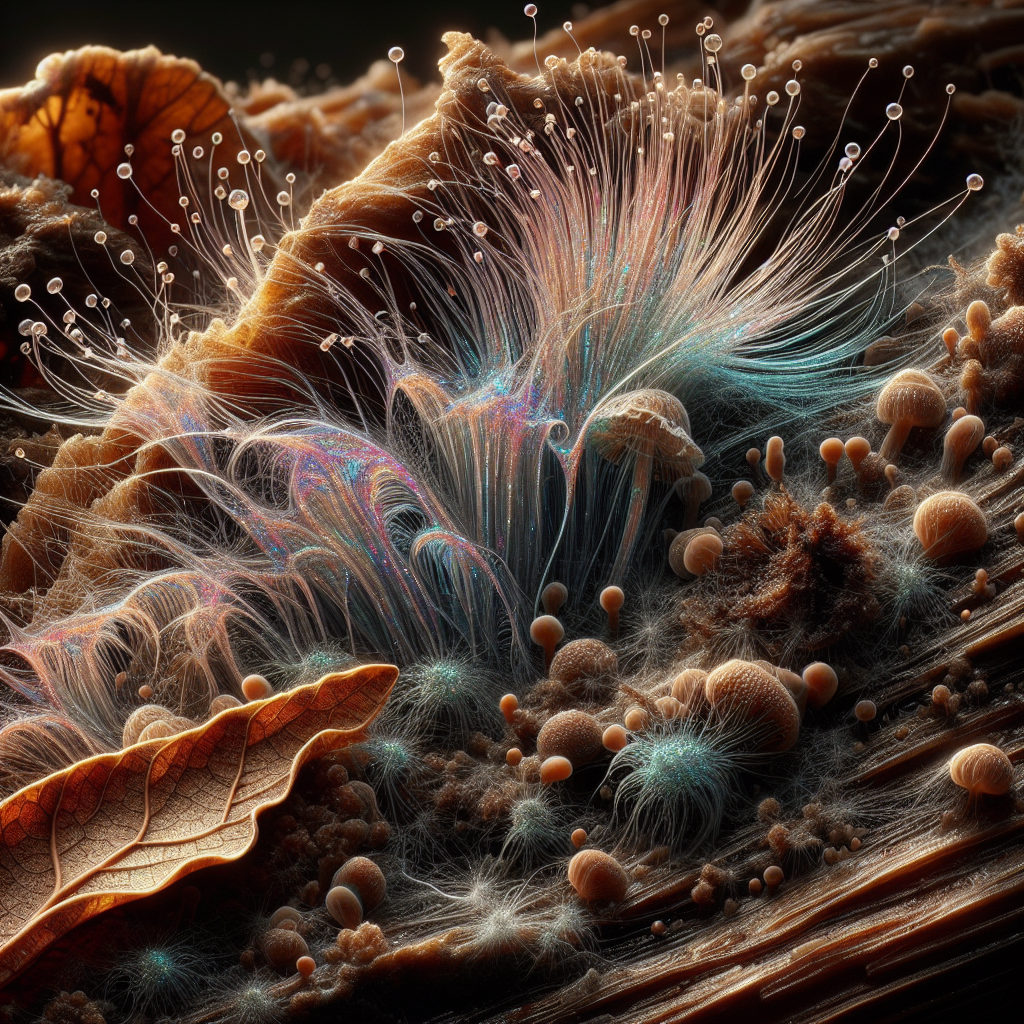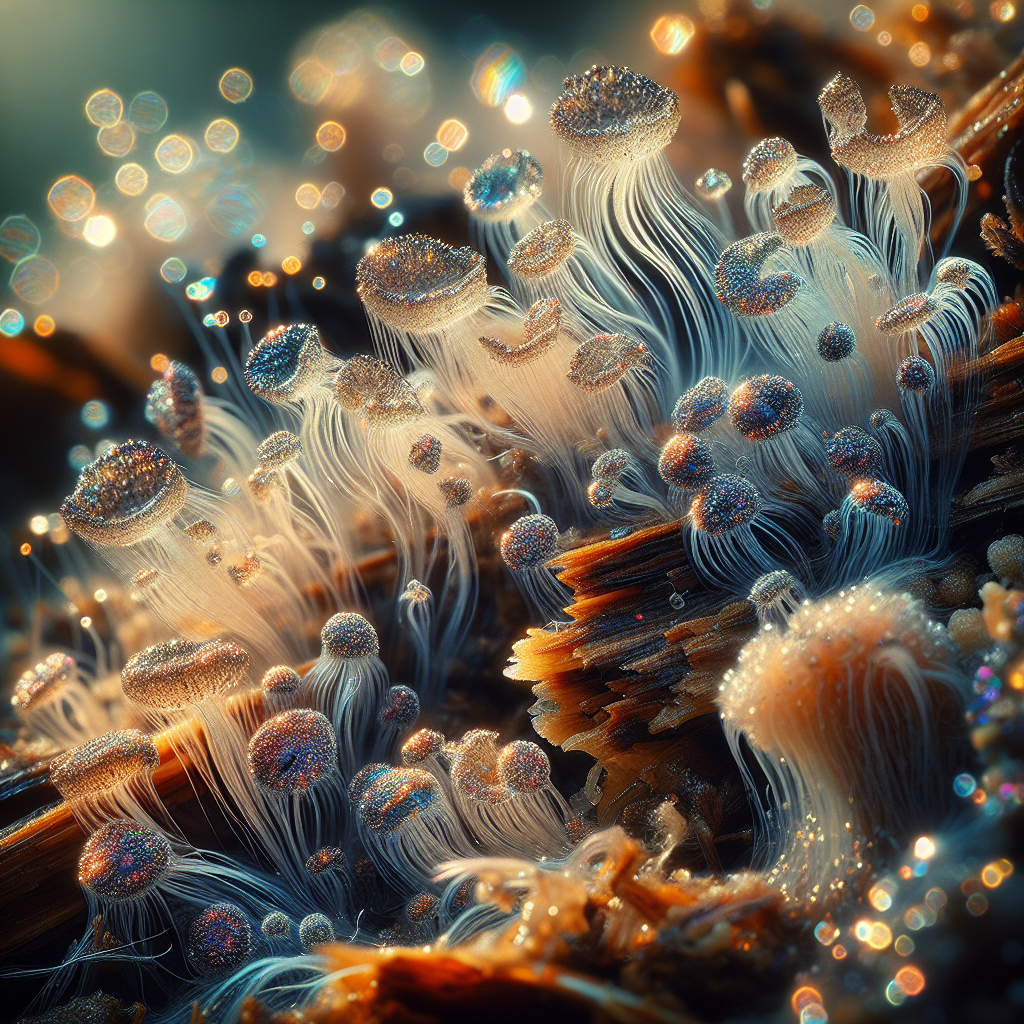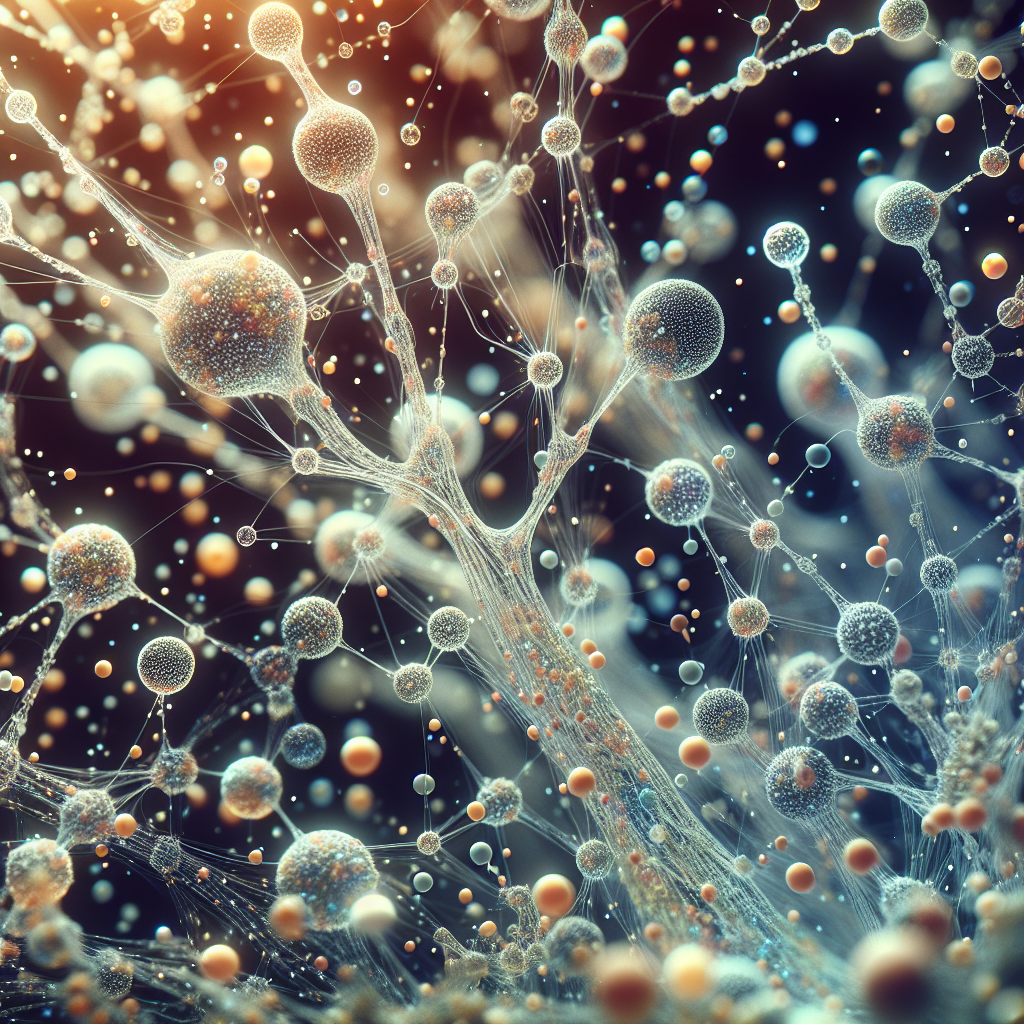Explore the fascinating world of spores and mycelium in this in-depth article. This thought-provoking piece guides you through the complexities of fungal reproduction, connecting the dots between delicate spores and the vast networks of mycelium they can give life to. Decipher the secrets these micro-organisms hold, and discover the crucial role they play in our planet’s ecosystems. Brace yourself as you venture into this unseen realm, where each strain and species writes its own remarkable story. Be prepared to be awed by the unseen, intricate world of spores and mycelium.

Understanding Spores and Mycelium
Fungi play an essential role in various life cycles and systems, and two critical components of their life processes are spores and mycelium.
Definition of Spores
Spores are the microscopic reproductive units produced by fungi. They are analogous to the seeds of plants, carrying the genetic information necessary for the formation of a new organism. Spores are incredibly resilient, capable of surviving extreme conditions such as prolonged periods of dryness, freezing temperatures, and intense heat.
Definition of Mycelium
Mycelium, on the other hand, is the vegetative part of a fungus. It is typically composed of a network of hyphae, which are thread-like structures. Mycelium serves several purposes in fungi, including nutrient absorption and reproduction.
Interrelation between Spores and Mycelium
The relationship between spores and mycelium is symbiotic. The mycelium produces spores, which can spread and potentially grow into a new mycelium network. On the other hand, the spores depend on the mycelium for their development.
Lifecycle of Fungi: Spores’ Role
Understanding the life cycle of fungi is crucial to comprehending the roles of both spores and mycelium. Fungi’s life begins as a spore, indicating the central role of these tiny particles.
Formation of Spores
The process of forming spores depends on the species of fungi and the environmental conditions it experiences. Some fungi will produce spores within the mycelium’s cells, while others will form them externally. Regardless of the location, the spores each contain a complete set of genetic information needed for growth and development.
Dissemination of Spores
Fungi can spread their spores far and wide, making use of various vectors including wind, water, and animals. This dissemination process is vital for the survival and proliferation of fungi, as spreading out reduces direct competition for resources.
Spore Germination
When a spore lands in a hospitable environment, it can germinate. This process entails the spore absorbing water and nutrients, triggering metabolic processes that lead to the growth of new mycelium—the first step in the development of a new fungus.
The Vital Role of Mycelium in the Fungal Lifecycle
Mycelium plays a central role in the lifecycle of a fungus. Its functions extend beyond providing a home for spore formation—it is also vital for growth and reproduction.
Growth and Development of Mycelium
Mycelium grows outward from the spore that produced it, moving into the environment in search of nutrients. This growth is often underground or within a food source, extending the mycelium’s network of hyphae and increasing the fungus’s overall size.
Role in Nutrition and Digestion
Mycelium is the primary site of nutrition and digestion for the fungus. The hyphae secrete enzymes into the nearby environment to break down organic material, and the broken-down nutrients are then absorbed by the mycelium. This allows fungi to feed on a wide range of substances, from simple sugars to complex organic materials.
Mycelium’s Functions in Reproduction
Besides producing spores, mycelium plays another role in fungi reproduction. Some fungi have two types of mycelium – one carrying male genetic material and the other female. When these two types meet, they can fuse to form a new organism.

Spore Dispersal Mechanisms
Passive Dispersal: Wind, Water, and Animals
Fungi have evolved multiple mechanisms to disperse their spores. The most common method is through wind or water. These spores are lightweight and small, allowing them to hitch a ride on the breeze or be carried by the current.
Active Dispersal: Launching and Other Mechanisms
Other species of fungi use more active dispersal methods. Some fungi can forcibly launch their spores into the air, while others rely on visiting insects or animals that inadvertently carry the spores away.
Factors Influencing Spore Dispersal
Environmental factors play a significant role in spore dispersal. Weather conditions, the presence of suitable carriers, and the density of other fungi all influence the success of spore dispersal.
Varieties of Spores
Spores can be split into multiple categories based on their formation, purpose, and characteristics.
Sexual and Asexual Spores
Fungi can reproduce through both sexual and asexual means, leading to the production of sexual and asexual spores, respectively. Asexual spores are formed without the fusion of nucleic material, while sexual spores are the result of genetic combination.
Endospores, Exospores, and Sporangiospores
Depending on their formation site, spores can be classified as endospores, exospores, or sporangiospores. Endospores form within the parent cell, while exospores form on the outer surface. Sporangiospores are formed within a sac-like structure called a sporangium.
Characteristics and Identification of Different Spores
Different spores have unique characteristics, assisting in their identification. These features include size, color, shape, and presence of specific structures like a germ pore or an ornamented wall.
Mycelium: The Living Network of Fungi
Mycelium Structure
Mycelium is made up of hyphae, which are typically long, tubular cells. These cells are separated by septa, or cross walls, which have pores allowing for cell-to-cell communication and exchange of materials.
Expansion and Growth of Mycelium
Mycelium grows through a process called apical growth, where the tips of the hyphae extend into the surrounding environment. This growth is mainly influenced by the availability of nutrients and the current environmental conditions.
Importance of Mycelium’s Communication Network
The network of hyphae not only facilitates nutrient absorption but also establishes a communication network within the fungus. This aids in coordinating the growth and development of the fungus, ensuring its survival.
Biotechnological Applications of Spores and Mycelium
Spores in Industrial Fermentation
Spores have found use in industrial fermentation processes due to their resilience and ability to germinate under specific conditions. They have been effectively utilized in the production of enzymes, acids, and even beverages such as beer and wine.
Mycelium in Mycoremediation
The mycelium’s ability to absorb and break down complex organic materials grants it crucial environmental applications. Specifically, it can be utilized for mycoremediation, the process of using fungi to clean up contaminated environments.
Other Scientific and Industrial Uses
Other scientific and industrial sectors benefit from spores and mycelium’s properties include medicine, agriculture, and many more.
Role of Spores and Mycelium in Ecosystems
Nutrient Cycling and Soil Fertility
Both spores and mycelium help in nutrient cycling by breaking down organic material, increasing soil fertility. They are vital decomposers and contribute significantly to nutrient cycling, especially of carbon and nitrogen.
Interactions with Other Organisms
Fungi form symbiotic relationships with other organisms, often with plants. This symbiotic relationship, known as mycorrhizal associations, benefit both the fungi and the plants.
Contribution to Biodiversity and Ecosystem Resilience
Fungi contribute significantly to biodiversity and ecosystem resilience. They provide important ecosystem services like decomposition and nutrient cycling that many other organisms depend on.
Potential Dangers and Issues Related to Spores
Spore-related Diseases and Allergies
While fungi and their spores play beneficial roles, they can also cause potential harm. Some fungi produce toxic spores that can lead to diseases and allergies in humans and animals.
Spores in Food Spoilage and Preservation
Fungi and their spores are major contributors to food spoilage worldwide. However, certain fungi and their spores are also used in food preservation and fermentation processes, producing several popular foods and beverages.
Handling and Safety Measures
Handling spores requires appropriate safety measures. These include using appropriate personal protective equipment and following strict protocols to minimize the risk of exposure.
Future Research Directions in Spore and Mycelium Studies
Advancements in Spore Biology
Research into spore biology continues to grow with advancements in microscopy and molecular biology. Exploring the biological intricacies of spores can lead to new applications in various fields.
Exploring New Mycelium Applications
Recent scientific advancements have allowed researchers to explore new applications for mycelium, including its use in construction materials, packaging, and even fashion industry.
Challenges and Opportunities in Fungal Research
Despite the progress made in studying spores and mycelium, several challenges need to be overcome. However, these also present opportunities for breakthroughs that can further our understanding of these essential biological structures and their practical applications.
